House of Pinots, TILIA estate from Vipava Valley, celebrated the 7th International Day of Pinot Noir on August 16th.
Each wine variety has its own international day. Seven years ago, under the leadership of the Vipava Valley wine cellar, TILIA Estate — the premier winery producing Pinot Noir — Slovenia also joined this global initiative.
The event “Let’s pay homage to Pinot Noir” brought together ten producers of this variety. The band Kranjci opened the event with the national anthems of Slovenia and France, the country where Pinot Noir originates, which they played in the vineyard. The organizers also prepared an exhibition of Pinot Noir clones that they grow in their vineyards, and thus, are able to achieve the multifaceted nature of their wines.
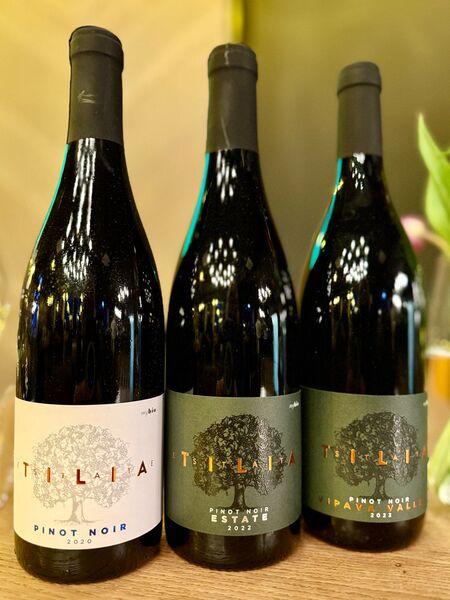
Part of the event was also the last chance to purchase the artistic line of Pinot Noir Out of the Blue 2024, a masterpiece of the Slovenian wine scene. A thousand bottles sold out in fewer than four months.
The event was attended by a hundred Pinot Noir fans from Slovenia, Croatia, the USA, Italy, and Germany, including Elizabeth Smith, a wine critic from California, and Bojan Tokić, a table tennis veteran.



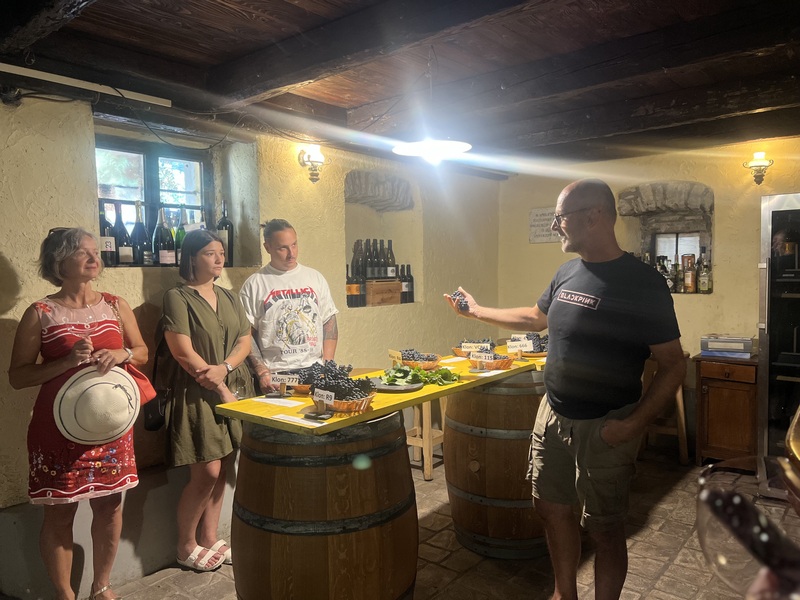
“Celebrating International Pinot Noir Day is a piece in the mosaic of promoting Slovenia as a wine tourism destination. Slovenian winemaking influences the recognition of our country. I am proud that our winery has taken the reins to pay tribute to this exceptional wine variety and has brought together more than 600 visitors since 2018,” said Matjaž Lemut — winemaker, oenological consultant, and the driving force behind TILIA Estate — as well as the organizer of International Pinot Noir Day. TILIA produces around 20,000 bottles of Pinot Noir annually.

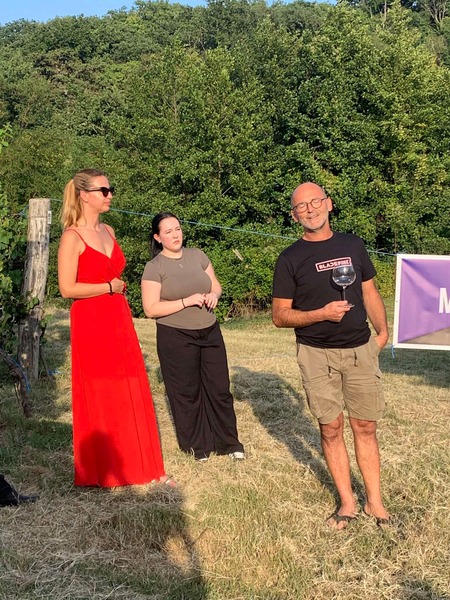
The Vipava wineries that presented their Pinot Noirs at the event were: Burja, Benčina, Čuk, Jamšek, Pasji rep, Saksida, Sanabor, Mansus, TILIA Estate, and Vipava 1894.
Part of the program was an exhibition of Pinot Noir clones. “Pinot Noir is a variety that is considered the oldest cultivated vine for wine production. Negrul, a renowned Russian geneticist and ampelographer, even assumed that its original homeland was the Nile Valley,” Lemut shared in the introduction. “Pinot Noir is the fourth flowering plant, the second woody plant, and the first fruit plant for which the nucleotide sequence in the entire genome is known,” Lemut emphasized. “Decoding the entire genome is helpful to us, as it reveals genes that affect the quality of wine.” Pinot Noir is subject to mutations. In the wine-growing region of Burgundy, Dijon in France alone, more than 40 clones of Pinot Noir have been identified, while ampelographers estimate that there are more than 200 — possibly even 1,000 — in the world. For comparison, for the significantly more represented variety Cabernet Sauvignon, only a little over ten clones have been identified.
At the exhibition, it was possible to view and taste the clones of Pinot Noir that thrive in the vineyards of the House of Pinots – among them clone VRC 18, clone R9, clone R4, clone 666, clone 777, clone 457, and clone 115.
“In general, it is true that clones with small berries are the basis for more developed aromas, those with loose clusters are more resistant to botrytis, and upright growing ones provide better profitability,” added Lemut.
The common feature is small berries in compact clusters, with juicy and sweet content. Pinot Noir is one of the more demanding and labour-intensive varieties in viticulture, as thin-skinned berries require an experienced winegrower. Genetic instability is also indicated by the interesting fact that even clonal descendants of the same mother plant are not the same, but differ in the size and shape of the berries and clusters. They often even have different aromas, or we can find all three colours on one cluster.
The glory of wine in art is almost endless, which is why the event also had a cultural note. The band Kranjci opened the event with the national anthems of Slovenia and France. The organizers conceived the program with a thought: since Pinot Noir originates from France, La Marseillaise was performed, and the Slovenian toast testifies not only to the host country, but also to the place that wine culture has in Slovenian tradition.


The event ended with a festival presentation of around 30 Pinot Noirs from ten Vipava producers.
At the House of Pinots, the relay race for the celebration of Pinot Noir is being passed on to the vineyard today, Monday, August 18 — namely, the harvest of Pinot Noir started for the base wine for their traditional method sparkling, EL (Emperor of Love), which premiered five years ago on International Pinot Noir Day.
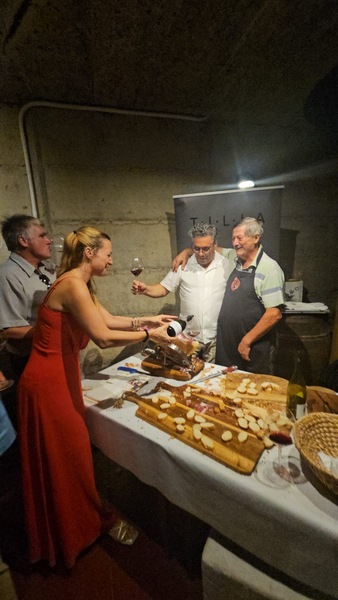
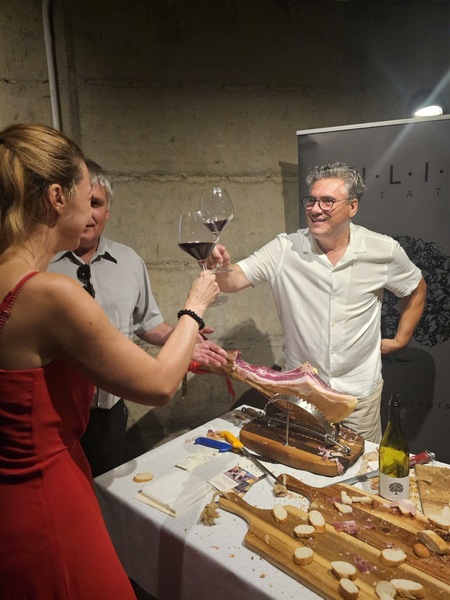

7th International Day of Pinot Noir

7th International Day of Pinot Noir





